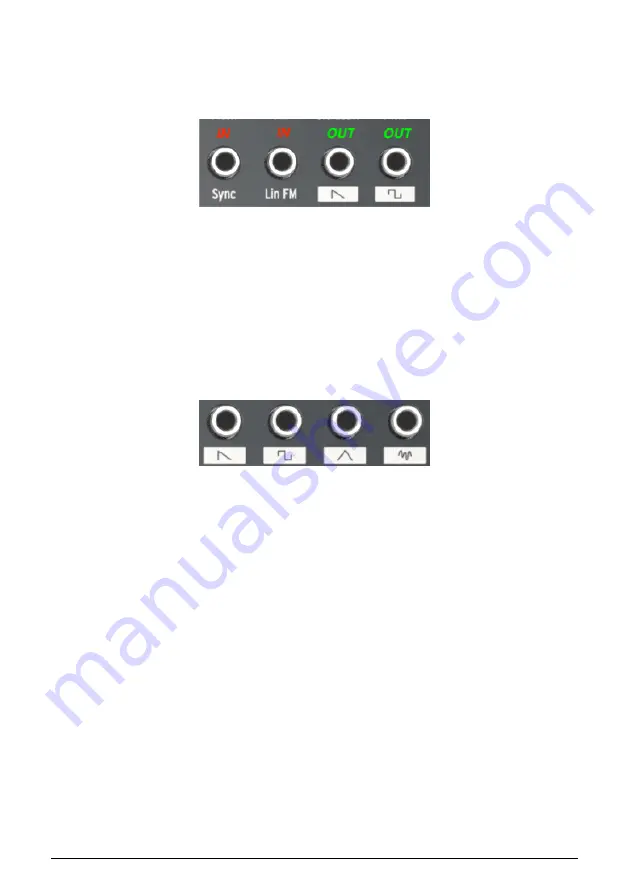
7.1.2. Patch points: Inputs vs. Outputs
The connectors in the MiniBrute 2 patch bay fall into two main categories: inputs and
outputs. It is easy to know which is which: The output jacks are labeled with white boxes
containing text or graphics, and the input jacks only have words under them.
Use the output jacks as sources for the input jacks, and use the input jacks as destinations
for the output jacks.
7.1.3. Outputs are full-scale
The signal at the output jacks is the direct output of whatever source they represent. For
example, the waveform output jacks in the VCO 1 section are full-strength; adjusting the
sliders in the OSC MIXER section will not control their output levels.
Other examples include the Out 1 and Out 2 jacks in the LFO 1&2 section. If the direct output
signal of an LFO is too wide for the desired input destination, it will need to be limited
somehow. Fortunately, we have provided two sets of Attenuators in the patch bay for this
purpose. We'll describe how to use the
in that section of the manual.
The input and output jacks have different
label types
Direct waveform outputs
Arturia - User Manual MiniBrute 2 - The Patch bay
54
Summary of Contents for minibrute 2 series
Page 1: ...USER MANUAL...












































